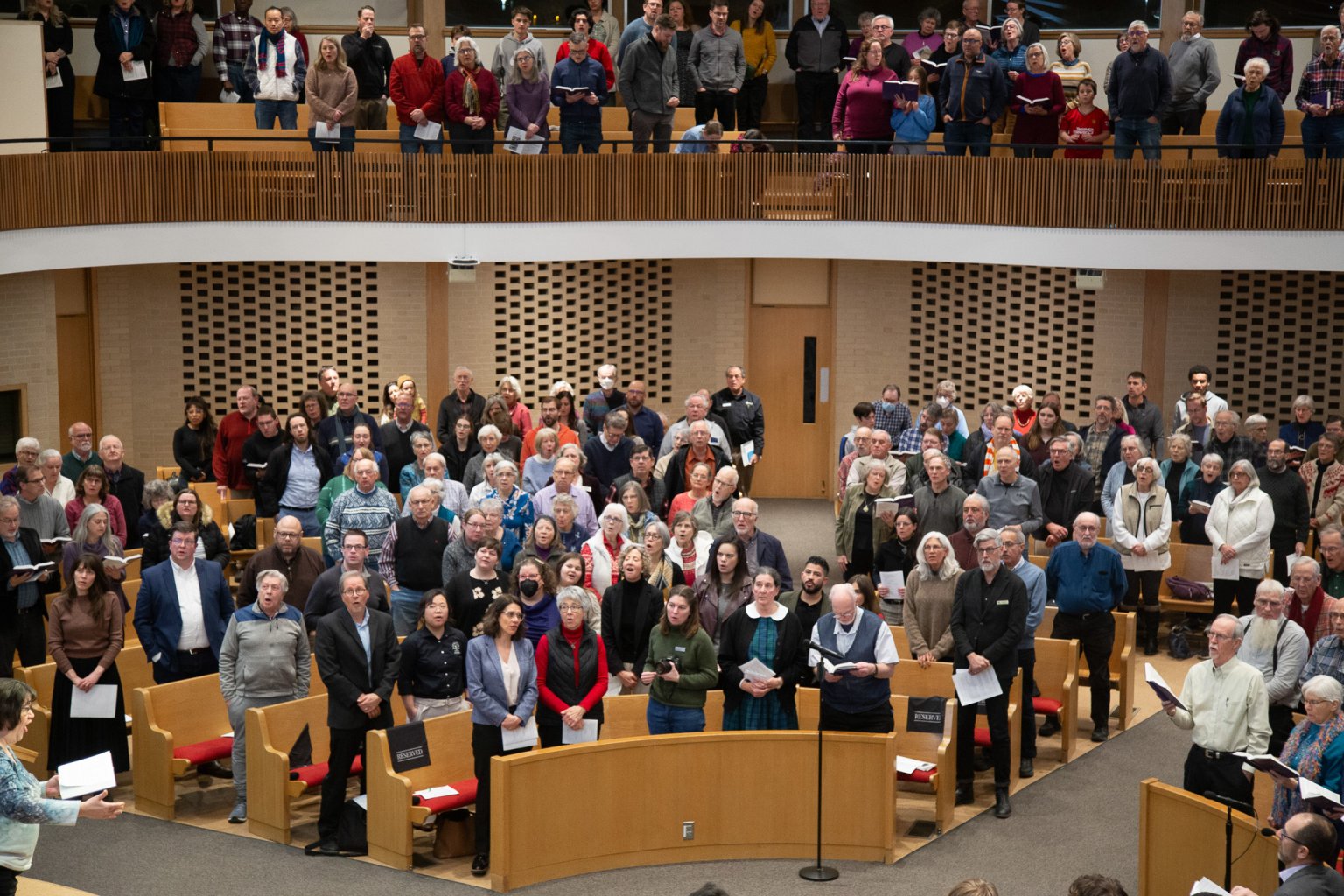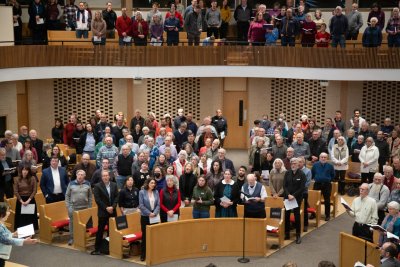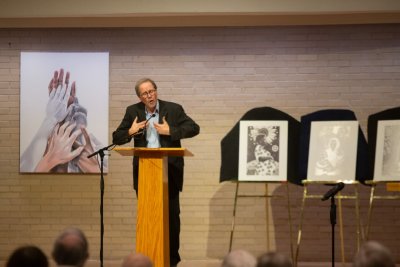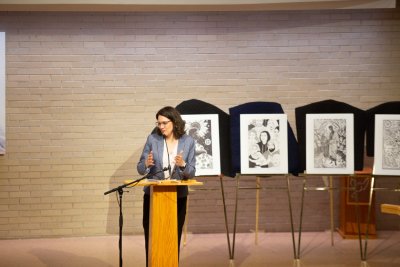In its fall enrollment for the 2025-25 academic year, Goshen College had a total student body headcount of 847, the same as last year.

News
At Goshen College, Anabaptists celebrate 500 years
Jan 25 2025
See all photos from the reception here.
On Jan. 21, 1525, a small group gathered in a small house in Zurich, Switzerland, where Conrad Grebel performed the first adult baptism of George Blaurock, beginning the Anabaptist faith tradition.

The congregation sings together Tuesday night.
500 years later, Anabaptists from around the continent gathered, both in-person and virtually, to watch a worship service on the night of Tuesday, Jan. 21, packing into the chapel at College Mennonite Church until it was filled to the brim.
The service featured a number of different speakers, congregational singing, performances from all three Goshen College choirs, homages to Anabaptists of the past, and discussions of the future of Anabaptism. The service was focused around the theme of the Anabaptism at 500 initiative: “Looking back, living forward” — honoring Anabaptism’s past, while preparing for and engaging with its future.
Tuesday night was also a celebration of the release of MennoMedia’s Anabaptist Community Bible, an initiative that has been in the making for the past two years. The Bible, which features contributions from Anabaptists across North America, aims to provide a path to reading scripture through a “Jesus-centered” lens, as is the Anabaptist tradition.
For John D. Roth, project director for Anabaptism at 500 and general editor of the Anabaptist Community Bible, hosting the national event in Goshen — and on the campus of Goshen College — was a special honor.

Roth gave the homily.
“Goshen has, in one way or another, been at the center of Anabaptist and Mennonite scholarship throughout the 20th century,” Roth said. “We’re not the center — no single group, no single tradition owns this [the Bible]… but we have played a significant part. So it’s fitting that the worship service and launch of the Bible take place here.”
Roth is right on both fronts — especially regarding the Anabaptist Community Bible.
One of the unique aspects of this Bible is its marginal notes and commentaries; they’re not all written by scholars and Biblical experts (though plenty are). Rather, the 7,200 notes include questions, insights and applications from roughly 600 Anabaptist Bible study groups across the U.S. and Canada, reflecting its name as a truly “community” Bible.
It also features 40 images from five artists depicting Biblical stories, and introductions to each book from over 60 Anabaptist scholars.
And yet, many of its contributors are connected to Goshen — and Goshen College.
Roth himself is perhaps the most obvious. For over two decades, Roth taught history at the college, cementing himself as one of the world’s leading Anabaptist historians. As professor emeritus, he still holds an office at the school, doing much of his work on the Anabaptism at 500 project on campus.
But Roth isn’t the only professor emeritus with input on the Community Bible. Randy Horst, professor emeritus of art, who taught at GC for over two decades, created 10 pieces of artwork featured throughout the Bible. Horst taught drawing, graphic design, printmaking and a variety of other art classes at GC.
Professors in the Bible and religion department also played a role in the creation of this Bible. Breanna Nickel, assistant professor of Bible and religion, contributed as a scholar, along with former religion professors Paul Keim and Jo-Ann Brant.

Amy Gingerich gave the call to worship Tuesday.
Alumni, too, have contributed — notably Amy Gingerich, who as the executive director of MennoMedia worked closely with Roth and others to promote and fundraise for the new Bible. Gingerich offered the call to worship Tuesday night, and participated in the prayer of dedication for the new Bible. MennoMedia as a whole carried out its largest-ever fundraising campaign for the Anabaptist Community Bible, raising $1.5 million.
And the theme of the Anabaptism at 500 initiative — ”Looking past, living forward” — is represented well by the Institute for the Study of Global Anabaptism, housed on the campus of Goshen College. Roth described it as “another expression of the effort to look beyond the past, and a beautiful expression of what it means to live forward!”
But, as Roth made clear, the Bible was a community effort — not just the Goshen community, or even the Mennonite community, but the greater Anabaptist community. Hundreds of groups around the continent represent 18 different Anabaptist faith communities, which was reflected in the service Tuesday night.
Roth said that his hope was for the celebration to be a “truly collective event,” bringing people to campus from many different Anabaptist communities. In that, he succeeded.


